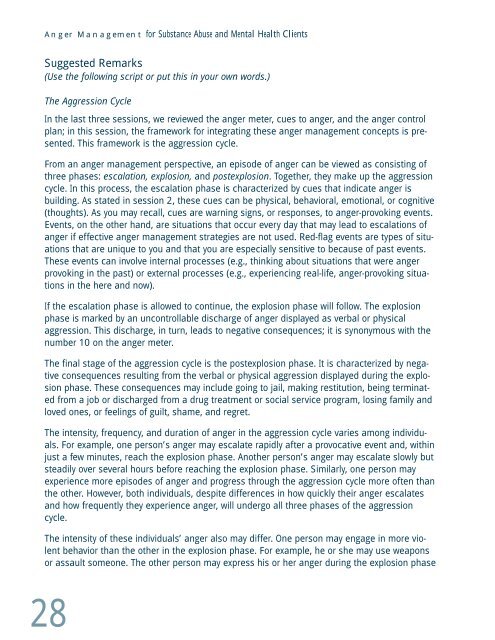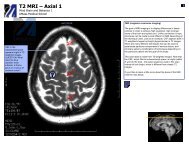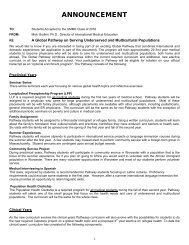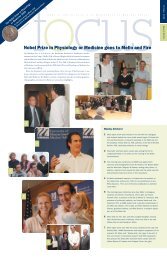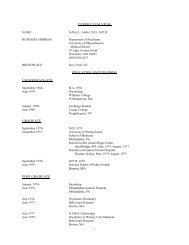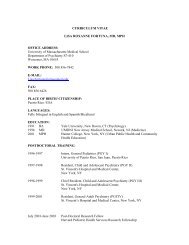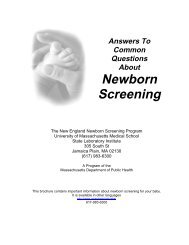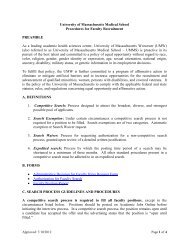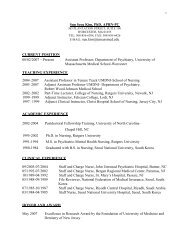Anger Management Manual - the ATTC Network
Anger Management Manual - the ATTC Network
Anger Management Manual - the ATTC Network
You also want an ePaper? Increase the reach of your titles
YUMPU automatically turns print PDFs into web optimized ePapers that Google loves.
<strong>Anger</strong> <strong>Management</strong> for Substance Abuse and Mental Health Clients<br />
Suggested Remarks<br />
(Use <strong>the</strong> following script or put this in your own words.)<br />
The Aggression Cycle<br />
In <strong>the</strong> last three sessions, we reviewed <strong>the</strong> anger meter, cues to anger, and <strong>the</strong> anger control<br />
plan; in this session, <strong>the</strong> framework for integrating <strong>the</strong>se anger management concepts is presented.<br />
This framework is <strong>the</strong> aggression cycle.<br />
From an anger management perspective, an episode of anger can be viewed as consisting of<br />
three phases: escalation, explosion, and postexplosion. Toge<strong>the</strong>r, <strong>the</strong>y make up <strong>the</strong> aggression<br />
cycle. In this process, <strong>the</strong> escalation phase is characterized by cues that indicate anger is<br />
building. As stated in session 2, <strong>the</strong>se cues can be physical, behavioral, emotional, or cognitive<br />
(thoughts). As you may recall, cues are warning signs, or responses, to anger-provoking events.<br />
Events, on <strong>the</strong> o<strong>the</strong>r hand, are situations that occur every day that may lead to escalations of<br />
anger if effective anger management strategies are not used. Red-flag events are types of situations<br />
that are unique to you and that you are especially sensitive to because of past events.<br />
These events can involve internal processes (e.g., thinking about situations that were anger<br />
provoking in <strong>the</strong> past) or external processes (e.g., experiencing real-life, anger-provoking situations<br />
in <strong>the</strong> here and now).<br />
If <strong>the</strong> escalation phase is allowed to continue, <strong>the</strong> explosion phase will follow. The explosion<br />
phase is marked by an uncontrollable discharge of anger displayed as verbal or physical<br />
aggression. This discharge, in turn, leads to negative consequences; it is synonymous with <strong>the</strong><br />
number 10 on <strong>the</strong> anger meter.<br />
The final stage of <strong>the</strong> aggression cycle is <strong>the</strong> postexplosion phase. It is characterized by negative<br />
consequences resulting from <strong>the</strong> verbal or physical aggression displayed during <strong>the</strong> explosion<br />
phase. These consequences may include going to jail, making restitution, being terminated<br />
from a job or discharged from a drug treatment or social service program, losing family and<br />
loved ones, or feelings of guilt, shame, and regret.<br />
The intensity, frequency, and duration of anger in <strong>the</strong> aggression cycle varies among individuals.<br />
For example, one person’s anger may escalate rapidly after a provocative event and, within<br />
just a few minutes, reach <strong>the</strong> explosion phase. Ano<strong>the</strong>r person’s anger may escalate slowly but<br />
steadily over several hours before reaching <strong>the</strong> explosion phase. Similarly, one person may<br />
experience more episodes of anger and progress through <strong>the</strong> aggression cycle more often than<br />
<strong>the</strong> o<strong>the</strong>r. However, both individuals, despite differences in how quickly <strong>the</strong>ir anger escalates<br />
and how frequently <strong>the</strong>y experience anger, will undergo all three phases of <strong>the</strong> aggression<br />
cycle.<br />
The intensity of <strong>the</strong>se individuals’ anger also may differ. One person may engage in more violent<br />
behavior than <strong>the</strong> o<strong>the</strong>r in <strong>the</strong> explosion phase. For example, he or she may use weapons<br />
or assault someone. The o<strong>the</strong>r person may express his or her anger during <strong>the</strong> explosion phase<br />
28


